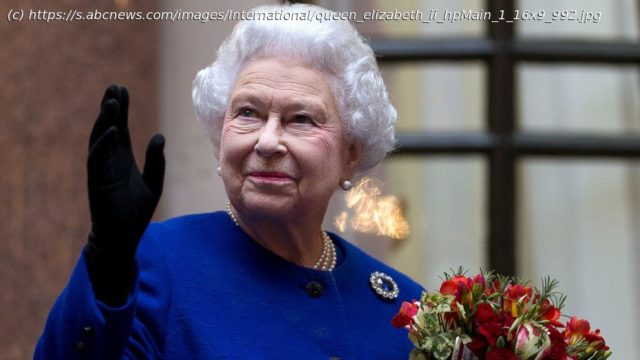Array
Queen Elizabeth II, the longest-reigning monarch in British history, has died. She was 96 years old.
«The Queen died peacefully at Balmoral this afternoon,» Buckingham Palace said in a statement Thursday afternoon. «The King and The Queen Consort will remain at Balmoral this evening and will return to London tomorrow.»
The queen is preceded in death by her husband of more than 70 years, Prince Philip, who died April 9, 2021, at the age of 99.
Queen Elizabeth is survived by her three sons, Princes Charles, Andrew and Edward; one daughter, Princess Anne; eight grandchildren, Princes William and Harry of Wales, Princesses Beatrice and Eugenie of York, and Peter and Zara Phillips, as well as Lady Louise Windsor and James, Viscount Severn. She is also survived by 12 great-grandchildren.
Her eldest son, Charles, the Prince of Wales, succeeds her as king. His wife, Camilla, the Duchess of Cornwall, is expected to become queen consort, a title that Queen Elizabeth requested at the time of her Platinum Jubilee.
Charles’s eldest son, Prince William, is now heir to the throne.
The queen was hospitalized in late October 2021 for what Buckingham Palace described as «preliminary investigations.» After a one-night hospital stay, the queen returned home to Windsor Castle, where she resumed her work, the palace said at the time.
A few weeks later, on Nov. 14, the queen missed the annual Remembrance Sunday service after she sprained her back, Buckingham Palace said in a statement at the time.
In February 2022, the queen tested positive for COVID-19 but had only «mild cold-like symptoms» as a result of the virus, according to the palace.
Two months later, in April, the queen celebrated her 96th birthday at Sandringham, her country estate in Norfolk.
In June, the queen celebrated her Platinum Jubilee, marking 70 years on the throne. She attended just three events during the four-day celebration due to what Buckingham Palace described at the time as «some discomfort.»
When Queen Elizabeth came to the throne in 1952, some Britons were so thrilled by the young queen they declared it was a second «Elizabethan Age.»
Elizabeth II would come to embody not only the British monarchy but a tradition of doing one’s duty and maintaining a stiff upper lip.
On her 21st birthday, she pledged to her future subjects: «I declare before you all that my whole life, whether it be long or short, shall be devoted to your service.»
It was a promise she never forgot.
Queen Elizabeth, the longest-lived British monarch, reigned through 14 American presidents, and just as many British prime ministers, proving herself a savvy stateswoman and a constant leader on the world stage.
The queen, who traveled on more than 271 state visits during her reign, was sometimes the only female on the stage with world leaders, and she always stayed mum on her personal political opinions, proving her mastery of «soft diplomacy.»
As recently as 2021, she met with world leaders at a Group of 7 summit meeting in Cornwall in June, and hosted President Biden and the first lady, Jill Biden, at Windsor Castle afterward.
In addition to being sovereign of the United Kingdom and 15 Commonwealth realms, she was also the head of the Commonwealth, a voluntary association of 54 independent countries.
During her reign, she visited nearly every country in the Commonwealth — missing only Cameroon and Rwanda — and made many repeat visits, according to the royal family’s official website.
Always committed to the service aspect of her role, the queen had links, either as royal patron or president, to over 600 charities, military associations, professional bodies and public service organizations, according to the royal family’s official website.
Well into her 90s, the queen continued to attend royal engagements, from Buckingham Palace garden parties and receptions to knighting ceremonies, state banquets and travels throughout the Commonwealth.
She was a modern monarch who kept up with the times, including sending her first tweet in 2014 and publishing her first Instagram post in 2019.
During the coronavirus pandemic, Queen Elizabeth began doing video calls so that she could continue to connect with people while working from home.
Princess Elizabeth Alexandra Mary was born in London on April 21, 1926, a granddaughter of King George V and the first child of Prince Albert, the Duke of York, and his wife, Lady Elizabeth Bowes-Lyon, a daughter of the Scottish nobility.
Four years after Elizabeth’s birth, the Yorks had a second daughter, Princess Margaret Rose.
The family’s lives changed in 1936, when King George V died, and his eldest son became King Edward VIII.
Edward VIII — known to Elizabeth as «Uncle David» — began a relationship with a woman named Wallis Simpson, an American divorcee.
The romance triggered a constitutional crisis. When Edward decided to give up his throne to marry Simpson, Elizabeth’s father, Albert, ascended to the throne.
Elizabeth was just 10-years-old when her father became King George VI, having adopted his father’s name.
With no sons in the family, the heir to the throne would be George’s elder daughter — Elizabeth.
In 1940, during World War II, Princess Elizabeth, then 14, made her first broadcast, addressing the children of Britain, especially wartime evacuees.
When the war ended, she began to carry out public engagements, including in 1947, when she made her first official tour overseas, joining her parents and sister on a visit to South Africa.
In1939, when then-Princess Elizabeth visited the Naval War College with her family, she reconnected with a young Prince Philip of Greece and Denmark, who had served in the British Navy during the war and was a student at the college.
Like Elizabeth, he was a great-great-grandchild of Queen Victoria.
The couple exchanged letters and, in 1946, Philip, then in his mid-20s, was given permission by King George VI to marry his daughter, on the condition that they wait until Elizabeth was 21.
The couple married on Nov. 20, 1947, in a royal wedding in Westminster Abbey. Philip renounced his Greek and Danish titles and adopted the anglicized surname of his mother’s family, calling himself Lt. Philip Mountbatten.
For several years after their marriage, Philip and Elizabeth lived a relatively normal life. He continued to serve in the Royal Navy, and the couple soon had their two oldest children, Prince Charles, in 1948, and Princess Anne, in 1950.
Philip and Elizabeth’s lives changed in 1952, when, while Elizabeth was touring Kenya, her father, King George VI, died.
She became Queen Elizabeth II at the age of 25, and Philip gave up his career in the Royal Navy to support his wife.
As if heralding a new, modern era, Elizabeth’s coronation on June 2, 1953, was broadcast on radio and television.
The new queen was a busy woman. She met regularly with the prime minister and other cabinet members and saw all cabinet papers as well as all important Foreign Office telegrams. She was also supreme governor of the Church of England.
She presided over a number of ceremonies, such as the opening of Parliament and the Trooping the Color; hosted heads of state of the Commonwealth and other countries; conducted official visits overseas; served as head of the British Navy, Army and Air Force; and served as patron of more than 700 organizations.






